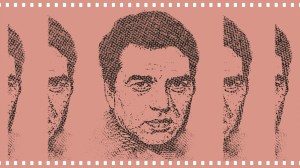Stay updated with the latest - Click here to follow us on Instagram
CAG flags 3-fold surge in AAP government ad spend
Ad spend increased from Rs 25.25 cr in 2013-14 to Rs 81.23 cr in 2015-16, says report; BJP wants it tabled in Assembly
 The actual cost of advertisements may exceed Rs 114.21 crore, stated the CAG report. (Source: Express photo)
The actual cost of advertisements may exceed Rs 114.21 crore, stated the CAG report. (Source: Express photo)
In an audit report of the Delhi government’s spending on advertisements and publicity, the Comptroller and Auditor General (CAG) has inferred that the AAP government’s expenditure on advertisement and publicity had surged from the previous government’s Rs 25.25 crore in 2013-14 to Rs 81.23 crore in 2015-16. Taking into account the committed liabilities of the government, the actual cost of advertisement in the year may exceed Rs 114.21 crore, stated the report.
The issue was raised by BJP MLA Vijender Gupta in the assembly Wednesday. When Gupta demanded that the report be tabled in the House, Deputy Chief Minister Manish Sisodia said he didn’t know of any such report.
“Test check of records of the GNCTD (Government of the National Capital Territory of Delhi) brought out expenditure of Rs 24.29 crore on advertisement and publicity campaigns that were not in conformity of fundamental principles governing expenditure from public funds and guidelines approved by the Hon’ble Supreme Court. Over 85 per cent of the expenditure of Rs 33.40 crore incurred in one specific publicity campaign pertained to advertisements released outside the NCT of Delhi, which was beyond the responsibility of the GNCTD…,” stated the report.
Media advisor to CAG B S Chauhan said the audit report on advertisement and publicity was submitted to the Lieutenant Governor and the principal secretary (finance) on August 22. The period of scrutiny of the report is between April 1, 2013 and March 31, 2016.
In 2013, the Directorate of Information and Publicity (DIP) met advertisement expenditure with a budget of Rs 29.66 crore under ‘other charges’ and Rs 20.23 crore in 2014-15. In 2015-16, the DIP proposed an allocation of Rs 26.90 crore which included Rs 20 crore for ‘other charges’ and the balance for salaries and recurring expenditure. However, DIP was allocated Rs 500 crore under the head ‘Advertisement and Publicity’ and Rs 22 crore under the head ‘other charges’, totaling Rs 522 crore. This allocation was subsequently reduced to Rs 100 crore in the revised estimates, the report stated.
According to the CAG, the expenditure, including that on tenders and other notices, of the DIP in 2015-16 was Rs 81.23 crore . The CAG report stated that the DIP expenditure was Rs 11.12 crore in 2014-15 and 25.25 crore in 2013-14 respectively.
“Scrutiny of the expenditure registers revealed that apart from expenditure of Rs 81.23 crore by the DIP, a further amount of Rs 20.23 crore was paid by DIP in 2016-17 for advertisements released in 2015-16 bringing the total expenditure on advertisements released during 2015-16 to Rs 101.46 crore. DIP informed audit that there was also a committed liability of approximately Rs 12.75 crore in respect of audio-visual advertisements released during 2015-16. The details of committed liability in respect of print and outdoor media were not provided by DIP though requested for. Thus, the actual cost of advertisements released during 2015-16 may go beyond Rs 114.21 crore,” the report stated.
The CAG pulled up the AAP government for using the name and symbol of the AAP in government advertisements and referring to the government as ‘Kejriwal sarkar’ which was against Supreme Court guidelines that state there should be political neutrality in government advertisements and they should not glorify politicians.
The report stated that on February 12, 2016, the Delhi government approved publishing of advertorials of two full pages each on February 14, 15,16 and 17 in 26 national newspapers, 37 regional newspapers in 14 states. Nine TV clips were issued for telecast on 89 TV channels including regional language channels of other states as well as seven radio jingles for broadcast of seven FM channels.
“… The total expenditure incurred on the campaign was Rs 33.40 crore,” it said.
The CAG also stated that the advertisements on women’s safety attempted to project the central government and the Delhi Police in negative light, again violating the Supreme Court’s guidelines.







